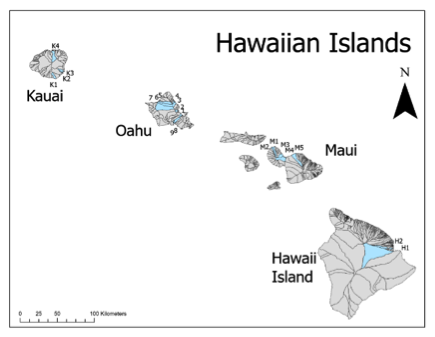
SPONSOR:
USGS Water Resources Institute Program
PROJECT PERIOD:
02/01/2018 – 12/31/2020
ABSTRACT:
Currently, microbial water quality is evaluated using fecal indicator bacteria. These bacteria are also abundant in animal feces as well as in extra-enteric environments such as tropical soils. There is a need for methodology that can reliably determine the health risk associated with indicator bacteria, depending on the contamination source. Hence, appropriate management techniques can be applied once the source of contaminants has been identified. Pepper mild mottle viruses (PMMV) have been suggested as sewage specific markers due to high and steady concentrations in human feces and sewage. Also, these viruses have been suggested as surrogates for human enteric viruses that are too numerous to be measured individually. The goal of this study is to evaluate whether PMMV can be used to track sewage contamination in Hawai‘i water environments by (1) determining the concentration of PMMV in Hawai‘i sewage samples by sampling three wastewater treatment plants and ten cesspools; (2) evaluating the effect of wastewater treatment on PMMV concentrations by sampling three wastewater treatment plants utilizing different treatment and disinfection procedures; (3) evaluating the feasibility of PMMV as sewage indicators by comparing the concentrations of PMMV to those identified for human polyomaviruses (HPyV, a DNA virus) and enterococci; (4) evaluating the seasonality of PMMV and HPyV in raw sewage to identify whether any seasonal change exists; and (5) identifying die-off rates of PMMV, HPyV, and enterococci in dark and sunlight exposed experiments. Monitoring for sewage-borne viruses, which are resistant to treatment and survival characteristics that differs from indicator bacteria, will be included in the state’s water quality monitoring programs.
PRINCIPAL INVESTIGATOR
